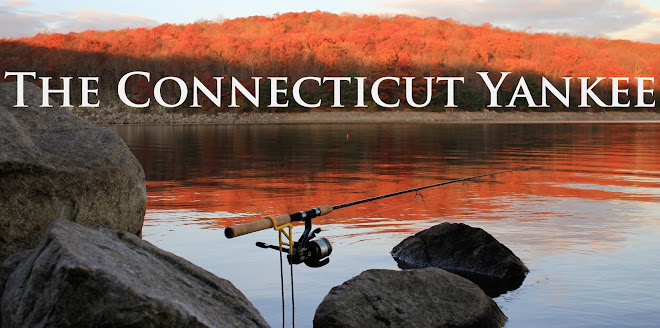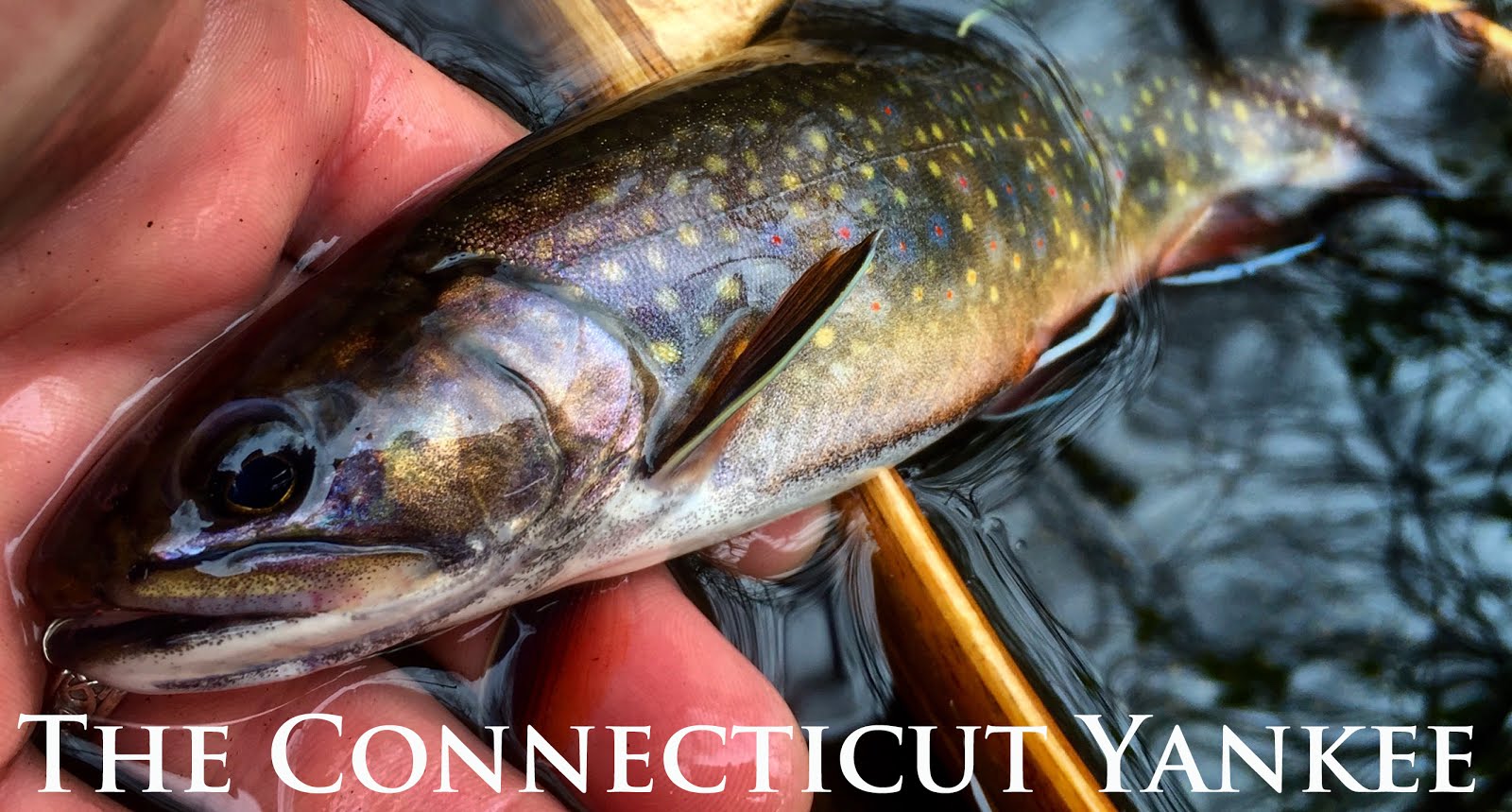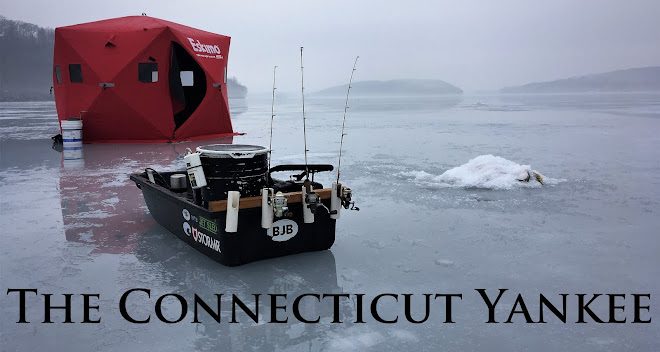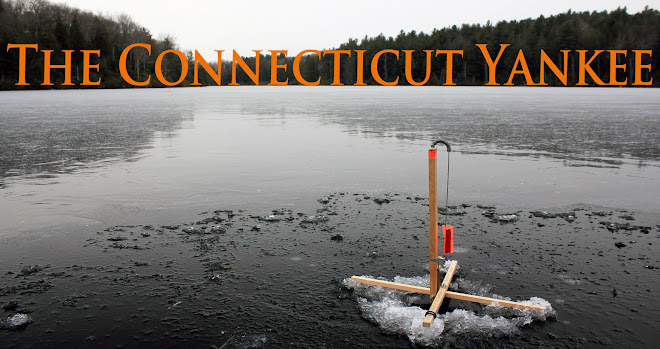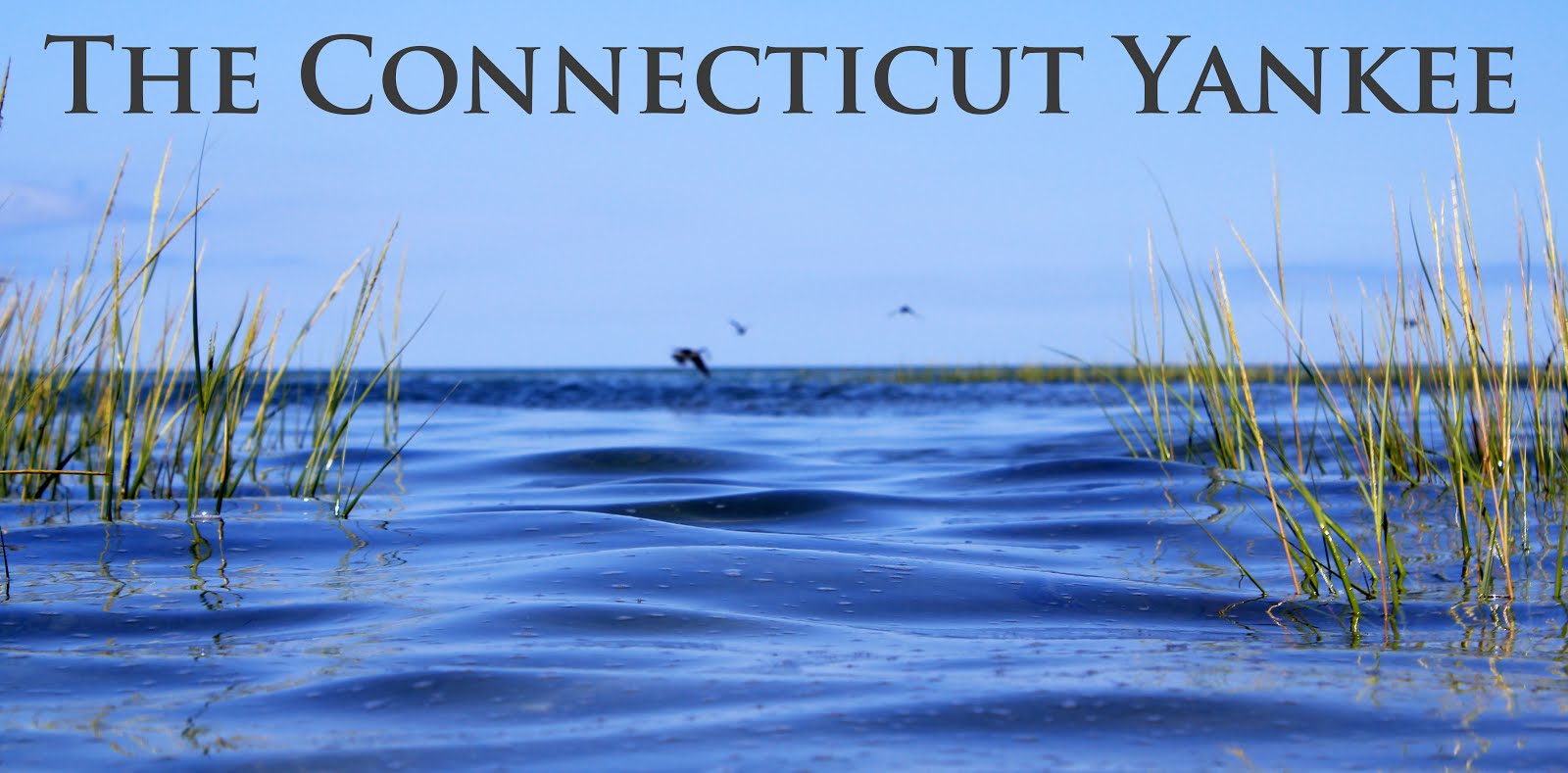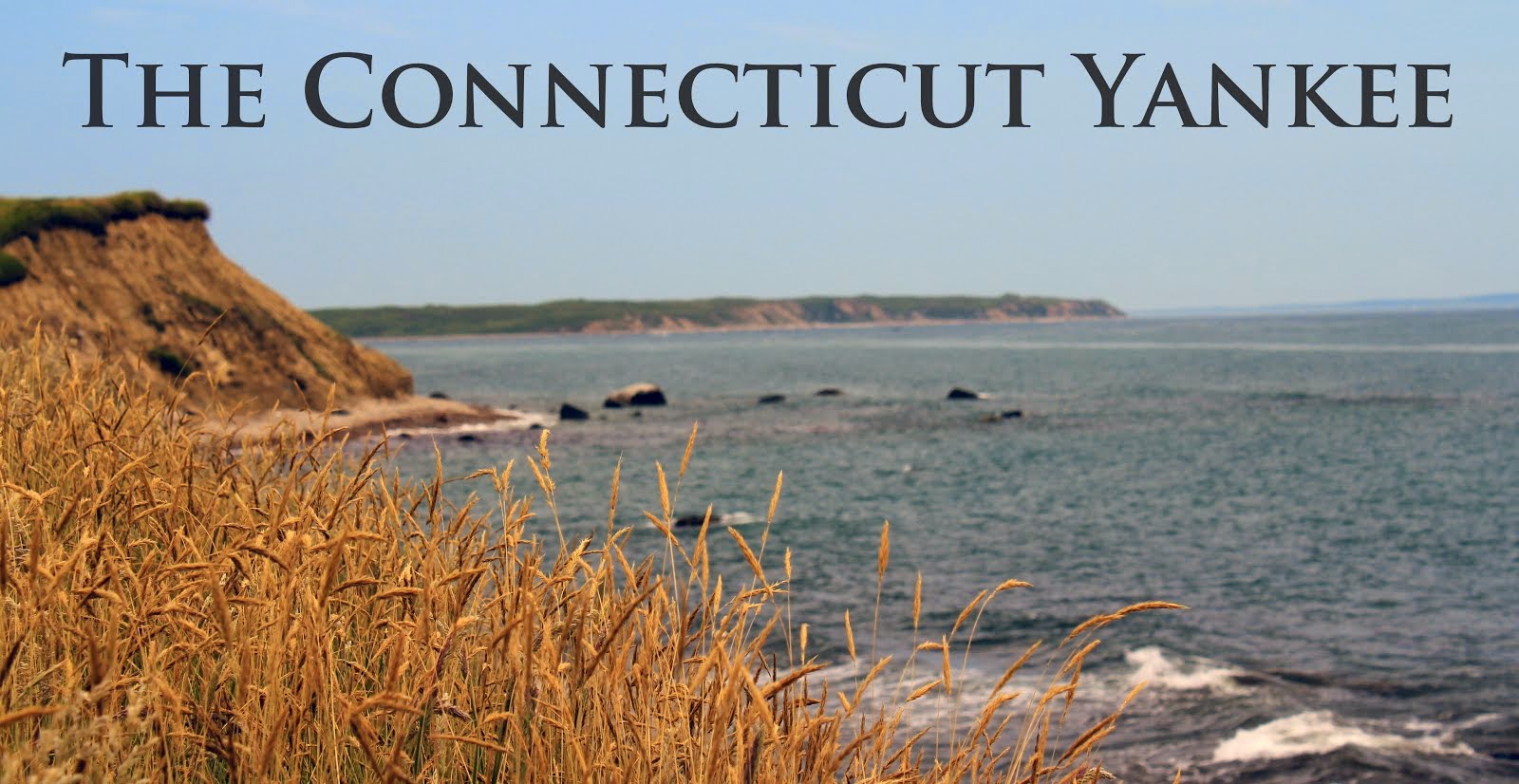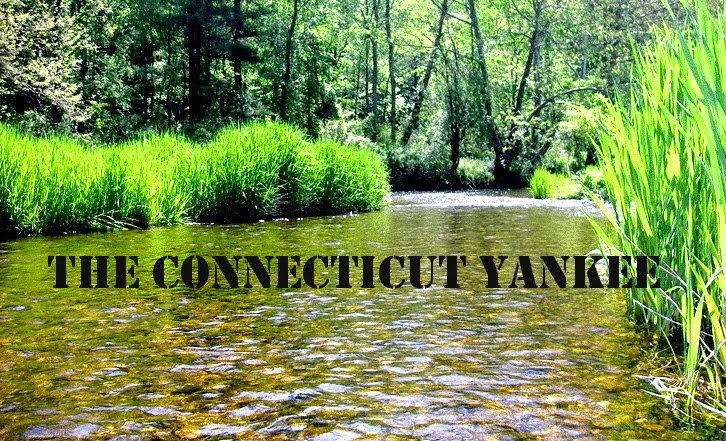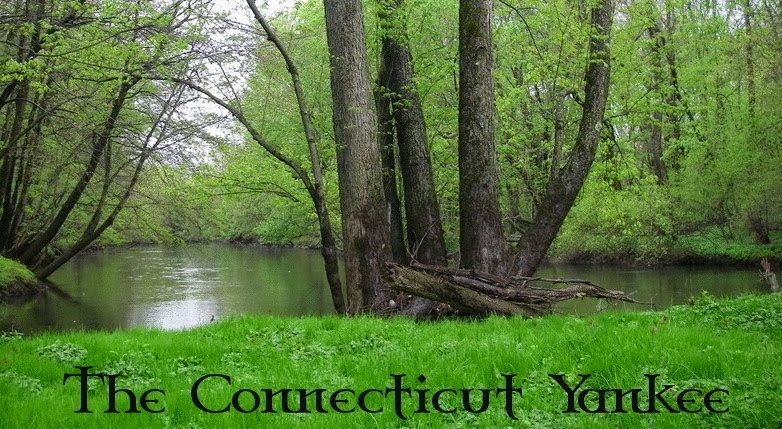Over the years, they have become the
fish I target most through the ice. For one, the chance is always there to pull
something really special up through the hole, but also because they fight well and the water they inhibit here is some of the first to freeze and last to
thaw. They are gorgeous fish in their own right and formidable predators with a
mouth full of sharp teeth. My style of ice fishing for them is primitive, which
is a nice change of pace from the more technical fishing I do for other
species. Without a doubt, northern pike are impressive and enjoyable creatures.
Esox lucius are not native to
Connecticut. Like many species, they were introduced at some point in time and
have thrived ever since. Wherever pike roam in the Nutmeg State, they are indeed
the apex predator of that body of water and can grow into giants. The current
Connecticut state record stands at 29-pounds, taken from Lake Lillinonah in 1980. Just
to our north and east, the records in Massachusetts and Rhode Island are both
35-pounds respectively. It’s no wonder why targeting trophy pike in open water
and through the ice has become so popular in the Northeast.
 |
| Northern pike are predators that eat almost anything and everything they desire. |
Starting in the 1980s, fisheries biologists from CT DEEP have done an outstanding job with the state’s northern pike management program, building it to the point where significant natural reproduction is happening in the marsh systems of a few of our more popular pike fisheries. After graduating college, I was able to witness the success of the program firsthand by taking a seasonal position within DEEP’s inland fisheries division. It remains the most interesting job I’ve ever held. One of the more fun responsibilities it entailed was helping capture and stock northern pike fingerlings.
The capturing part took place on
a DEEP-managed marsh along the Connecticut River. When it floods, northern pike
(and other fish) make their way into this marsh and a culvert pipe, their only
exit back to the main river, is blocked off. While inside, some of the adult
pike spawn successfully and the marsh is drained months later after their
offspring reach the desired fingerling size, about four to six inches. It was one of my tasks
to sit on the river side of the culvert and catch these fingerlings in a large
net as they exited the pipe. There was no knowing when or what was coming through.
Sometimes large pike would shoot out like rockets—a startling experience on a
good day, even more so with a hangover—and I would have to wrangle them from
the net and release them back into the river. The fingerlings, however, would
be carefully counted, sometimes fin-clipped, and placed in tanks on stocking
trucks and driven to various pike management lakes around the state.
On one evening that summer, I
remember releasing some of these little guys in the shallows of a favorite northern
pike fishery—it must have been like ringing the dinner bell because immediately
a larger fish (my money is on largemouth bass) blasted a few unlucky ones hanging
out just below the surface. A bunch of these fingerlings, I’m confident,
survived the odds and grew up to be trophy-class fish.
 |
| Aaron Swanson with a trophy CT northern pike. |
Fast forward 15 years to the subpar Connecticut winter we are experiencing now. A recent catch, it turns out my final of the short ice season, got me thinking again about the origins of the pike swimming in our waters. As soon as it came topside, I knew this fish was a little different—it had a pattern unlike any pike I’d seen to that point. I immediately thought it was a cross between a pike and a pickerel because of the chainlike markings along its lower flanks. It wasn’t a very large fish, but it was healthy as a horse and surely unique. Looking for clarity if it was a hybrid or not, I later sent a photo to biologists involved in DEEP’s pike management program. I am glad I did because they shared some interesting info I wouldn’t have learned otherwise.
The biologists acknowledged its unusual
markings, yet could not make a definitive call on whether it was a hybrid or
not without an up-close look at its opercle, the plate-like bone also known as
the gill cover. It turns out that scales are present on the upper half of a
pike’s gill cover, but are absent on the lower half. On pickerel, however, the opercle
is fully covered with scales. And on hybrids, scales cover exactly
three-quarters of it. The biologists added that in the 30 or so years that DEEP
actively trap-netted adult pike for broodstock, a pike/pickerel hybrid was captured
almost every year, sometimes up to two or three of them were netted. I found the
possibility of catching my first hybrid pretty cool, but the story doesn’t
quite end there.
 |
| My final fish of the 2019-2020 ice season and an interesting one at that. |
One of biologists circled back with an interesting twist. He had seen pike with similar markings before while collecting fingerlings from Connecticut marshes and believed my catch stemmed from a past stocking of fish from New Jersey. “For a number of years, we’ve been receiving free pike fry from New Jersey that we’ve raised in our marshes, or at Burlington hatchery, to fingerling size and have then stocked in a couple of our pike management lakes,” he said. The neat part, I thought, was that they could tell exactly what body of water in New Jersey the pike originated from.
The biologists had sent my photo
to their counterparts in New Jersey’s Division of Fish & Wildlife, who recognized
it straight away. Evidently, there is one reservoir down there where the pike exhibit
similar chainlike markings. Several of the adult pike from that reservoir were used
as broodstock back in 2016. Fingerlings that were raised from the New Jersey
fry were later stocked in the very lake I caught my fish in, which made sense
because, based on its size, was thought to be in the range of three to four-years-old.
This is not groundbreaking stuff, but it was cool to learn the backstory of my catch. It’s not often we, as anglers, get that sort of insight or closure on the fish we spend so much time and effort perusing. This exercise reinforced my appreciation for the work of our inland fisheries staff and furthered my understanding of the gamefish I am fortunate to target each winter. With the growing respect for the species within the angling community and increasing use of proper catch and release methods, Connecticut’s northern pike management program has a bright future ahead. And hopefully I run into another 2016-year class Jersey fish down the road.
This is not groundbreaking stuff, but it was cool to learn the backstory of my catch. It’s not often we, as anglers, get that sort of insight or closure on the fish we spend so much time and effort perusing. This exercise reinforced my appreciation for the work of our inland fisheries staff and furthered my understanding of the gamefish I am fortunate to target each winter. With the growing respect for the species within the angling community and increasing use of proper catch and release methods, Connecticut’s northern pike management program has a bright future ahead. And hopefully I run into another 2016-year class Jersey fish down the road.
 |
| Another example of a 2016-class pike that originated from broodstock from the same New Jersey reservoir. |











.jpg)

